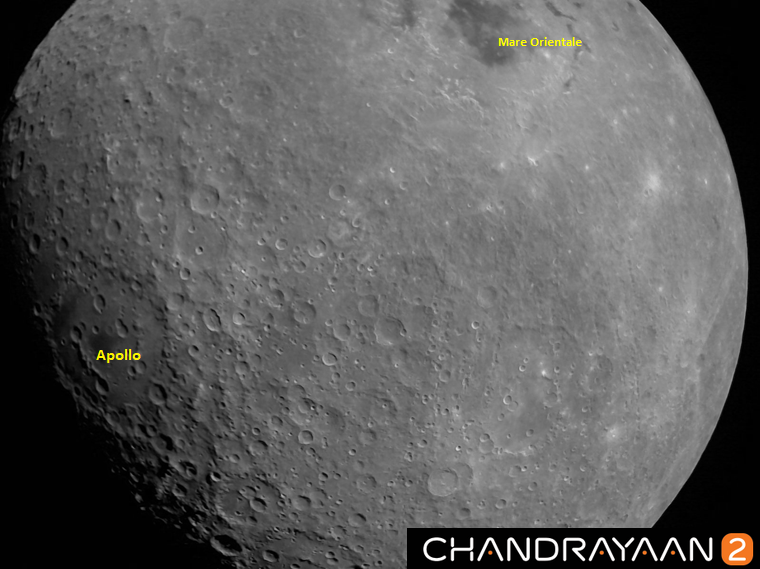ISRO spots Vikram
By Dheeshma
Bangaluru: In a breaking turn of events, Indian Space Research Organization (Isro) has located Vikram Lander on moon. “We’ve found the location of Vikram Lander on the lunar surface & orbiter has clicked a thermal image of Lander. But there is no communication yet. We are trying to have contact. It will be communicated soon,” Isro chief, K. Sivan confirmed to ANI.
Indian Space Research Organisation (ISRO) Chief, K Sivan to ANI:We've found the location of #VikramLander on lunar surface&orbiter has clicked a thermal image of Lander. But there is no communication yet. We are trying to have contact. It will be communicated soon. #Chandrayaan2 pic.twitter.com/1MbIL0VQCo
— ANI (@ANI) September 8, 2019
Isro has also released the first click of the moon captured by Vikram Lander. Detailing the captured image, Isro said, “Mare Orientale and Apollo, developed due to previous Moon landing are identified.”
Take a look at the first Moon image captured by #Chandrayaan2 #VikramLander taken at a height of about 2650 km from Lunar surface on August 21, 2019.
Mare Orientale basin and Apollo craters are identified in the picture.#ISRO pic.twitter.com/ZEoLnSlATQ
— ISRO (@isro) August 22, 2019
This new progress is a ray of hope for India’s moon dream. On Saturday morning Isro had lost contact with the Vikram Lander during its historic soft-land on the moon’s South Pole region. Isro also informed that the communication with the Lander has not yet been established and that the research centre is still trying to establish contact.
What went wrong earlier with India’s dream mission- Chandrayaan 2?
It was only 2.1 km left for India to make history and then the problem started. At 1:40 am on Saturday Isro scientists cheered and clapped as Chandrayaan-2’s Vikram Lander started descending towards the untouched lunar South Pole.
However, 12 minutes after Vikran began its descent, when it was just 30 more seconds for India to touch the moon, at Isro there was pin-drop silence. After a few minutes of ambiguity, Isro chairman K. Sivan confirmed that the research center lost communication with the Vikram Lander about 2.1 km from the Lunar surface and that data is being analysed.
Now, what went wrong?
Retd Satish Dhawan Space Centre (SHAR) Group 1 director Vivek Sarathy says, “At 2.1 km, the velocity component of Vikram was 36 km/s. In 30 seconds, this had to be made to zero. However, there will be an acceleration by the moon’s gravitational pull. The capacity of the thruster had to be determined based on these two velocity components. It is at this point we lost the signal.”
If the thruster is unable to counter the moon’s gravitational pull then that can lead to system failure. So, the question is whether we were able to model the gravitation pull adequately.
Possibility of model error- thruster may be underperforming
As the lunar south pole is completely untouched, the geographical data of the region is not fully mapped. Hence it was based on several assumptions that Isro modeled the total algorithm for the descent. How accurately the Chandrayaan- 2 team was able to model the gravitational pull is unclear.
“Whether the presumed gravitational pull of the moon’s surface is equal on the entire moon surface or whether they are different at the south pole and north pole has to be learned,” said Vivek Sarathy.
Abrupt silence of communication system
Experts say, “The communication system cannot go wrong so abruptly unless there is traffic due to cosmic particles like dust.”
However, Chandrayaan-2 had an artificial intelligence-powered rover- ‘Pragyan’ installed within ‘Vikram” to control the moon’s gravitational pull and aid the rover in landing.
“The intelligence reacts when the sensors are properly functioning. Under the environmental condition, the reactors might have got clogged. This can obstruct its communication with the intelligence system and lead to decision failure,” said experts.
As the south pole is unexplored, unknown factors for failure are many. Based on their probability, we need to rule out each scenario and zero down to a particular problem, said, experts.
“Once the exact reason for system failure is revealed, the solution is easy. One year is quite sufficient for a comeback. We are happy that we could travel until the last mile. We were at a distance of 2 km from success. Various scenarios need to be generated, and each of them should be evaluated with the response to the new data. The data extracted so far may not be sufficient to establish the root cause. Definitely health monitoring is possible from the ground. But unfortunately, the health monitoring parameters that need to come through the communication system has been blocked. Now we need to generate a lot of hypotheses and then zero down,” Mr Sarathy added.